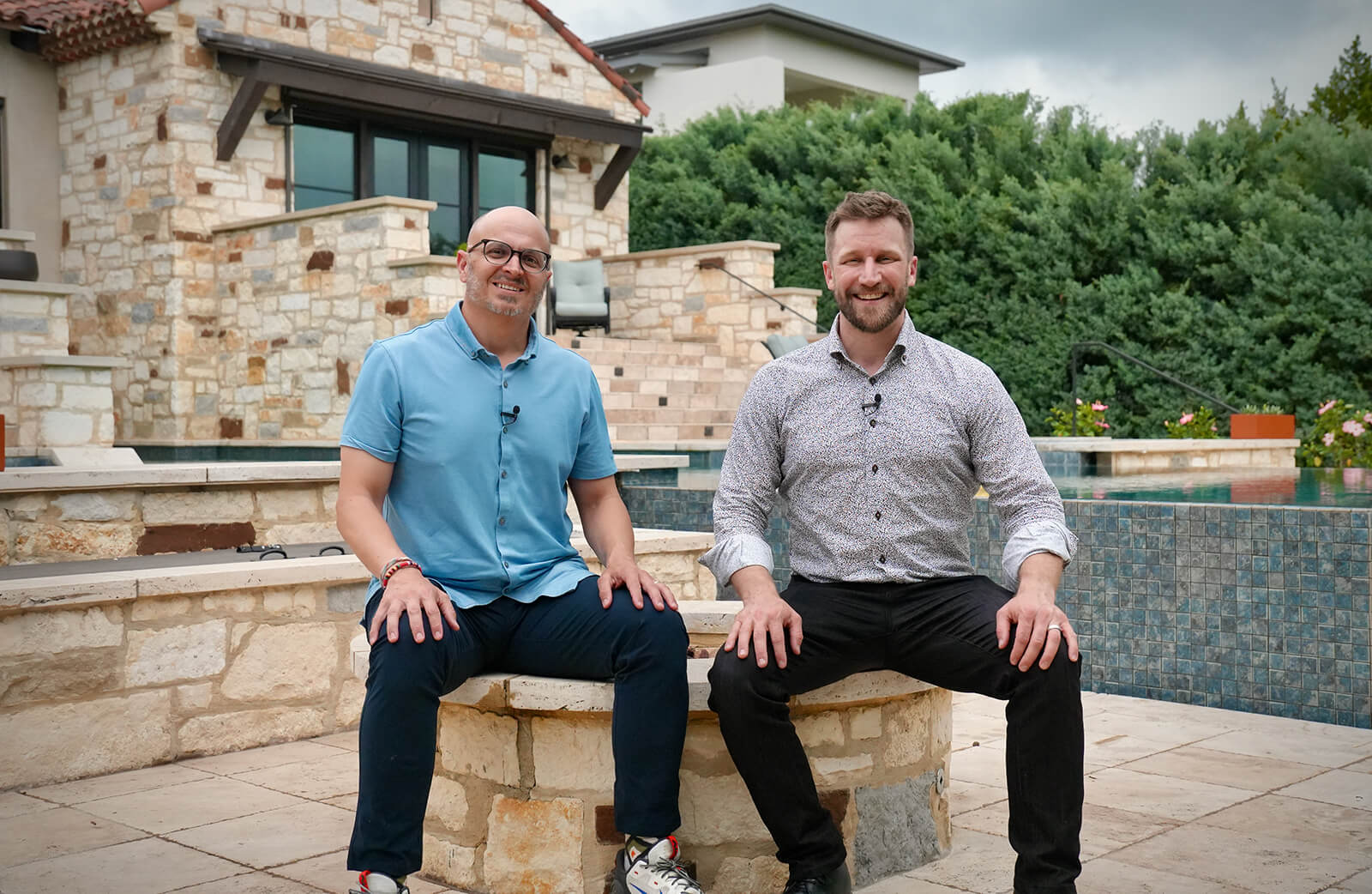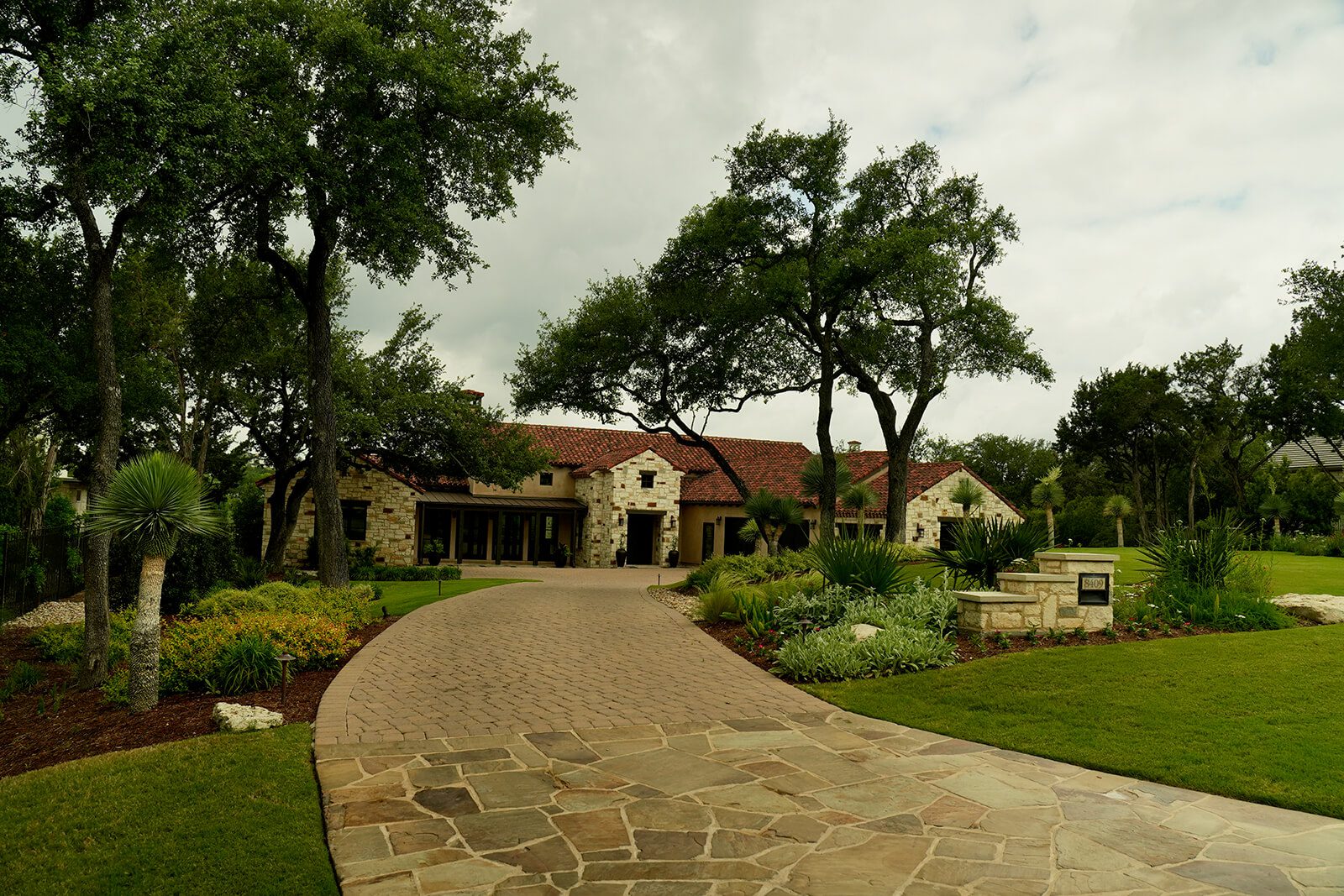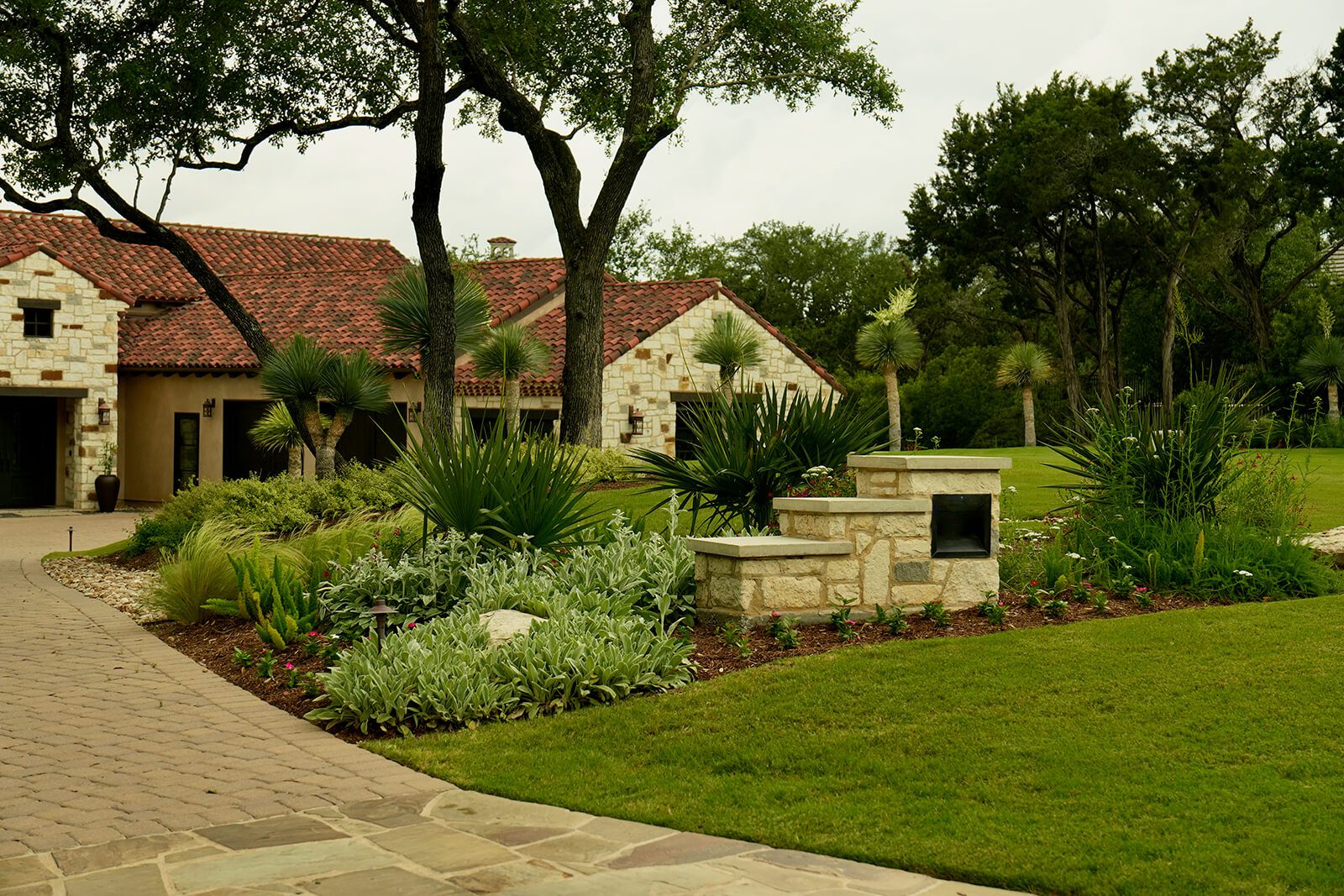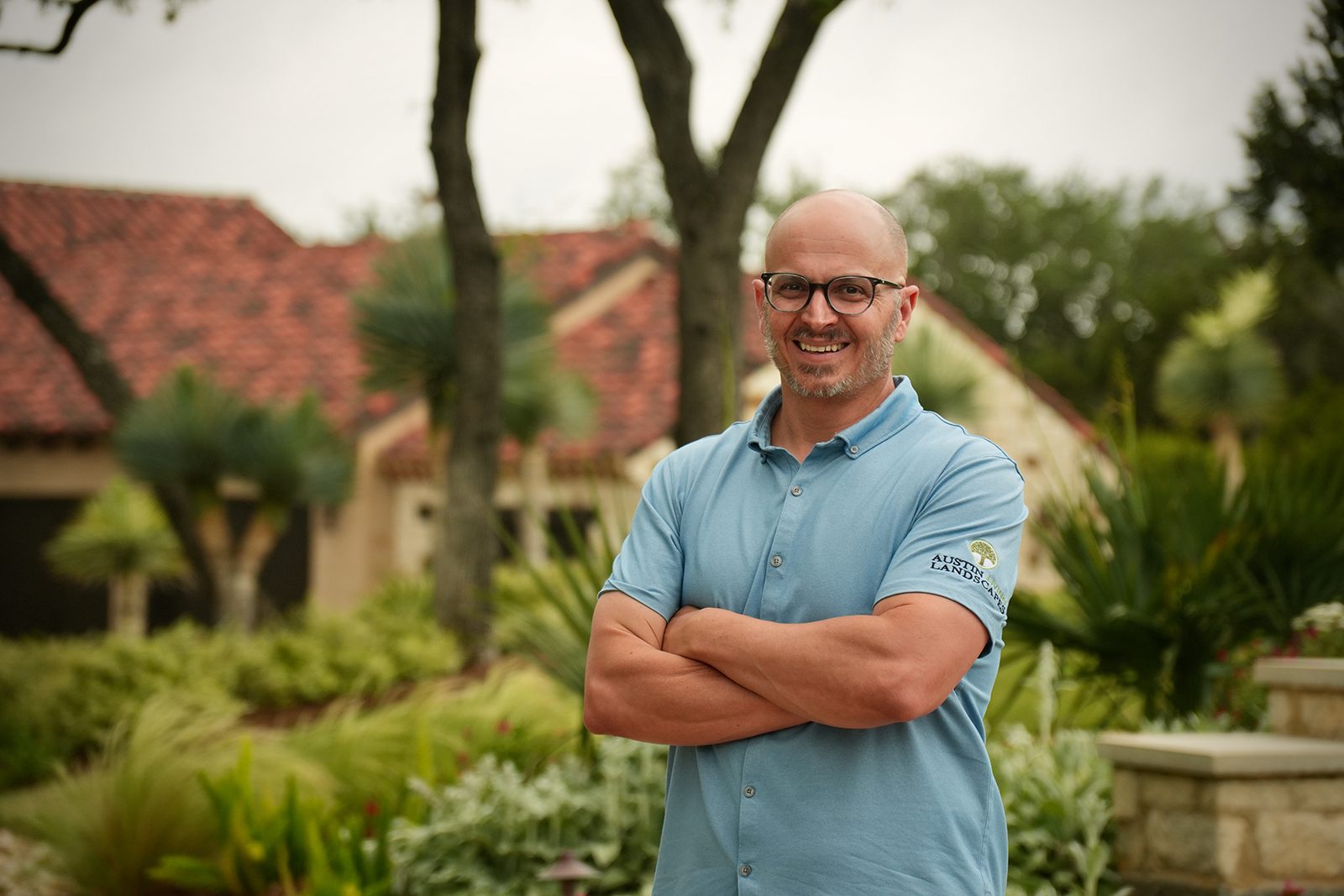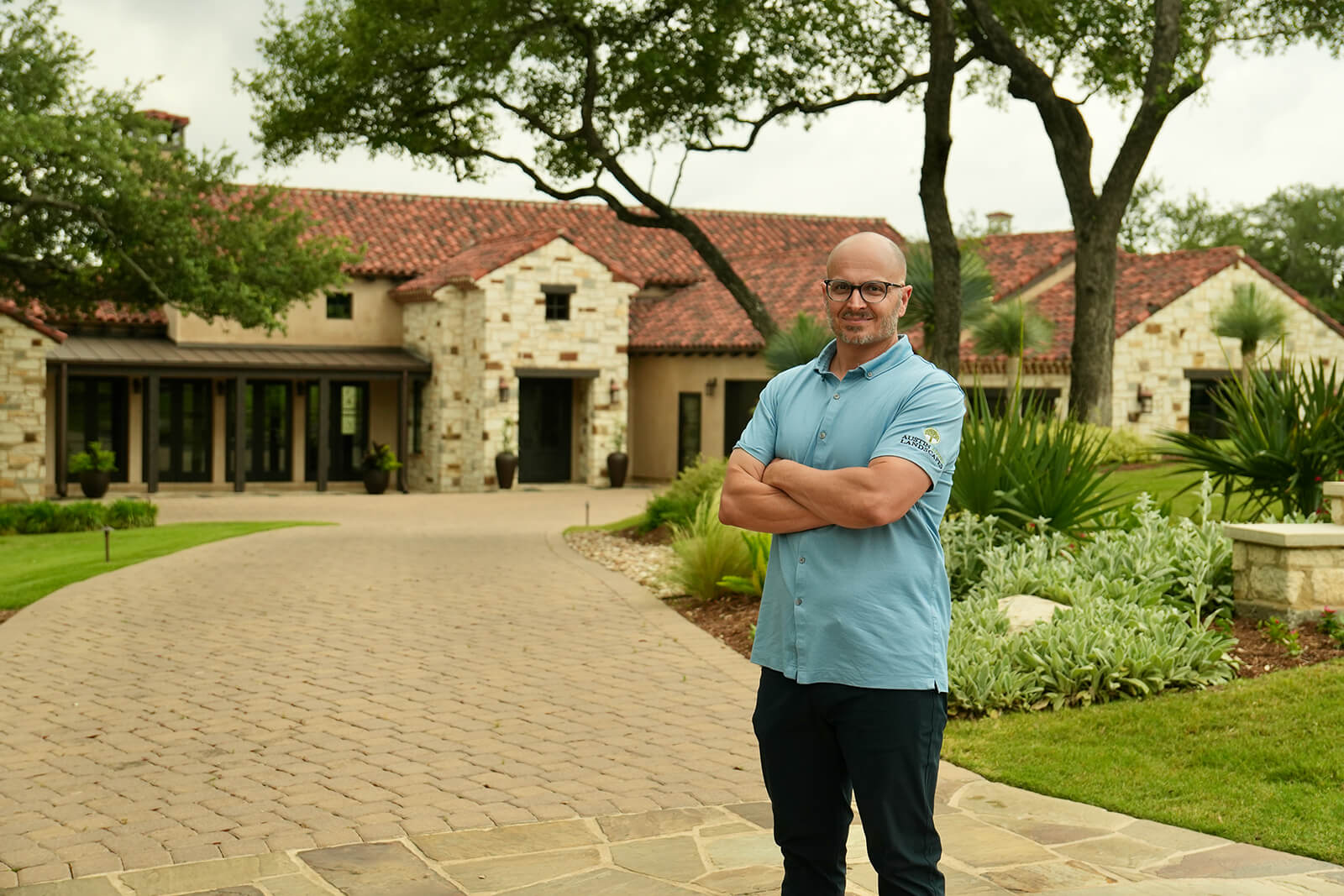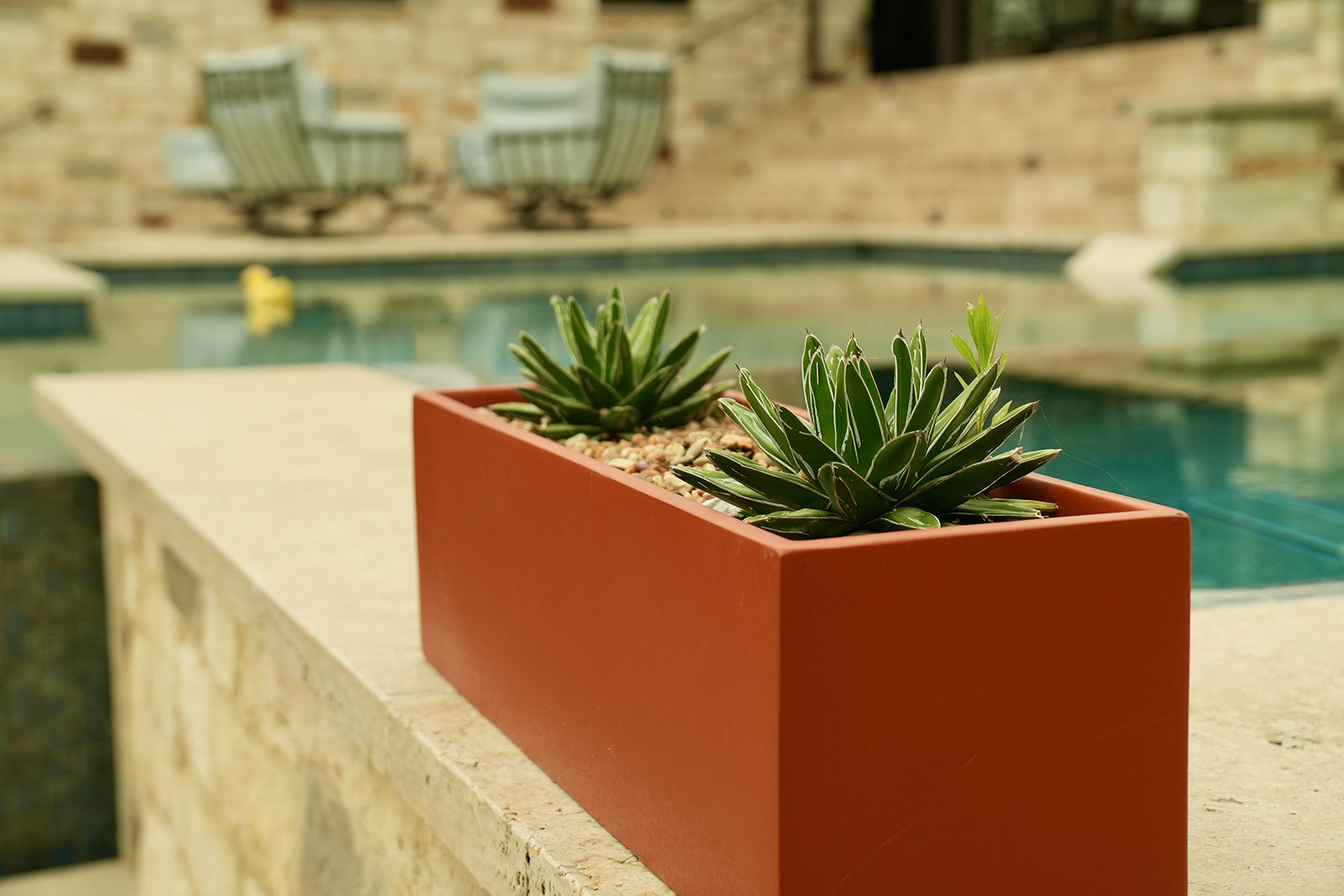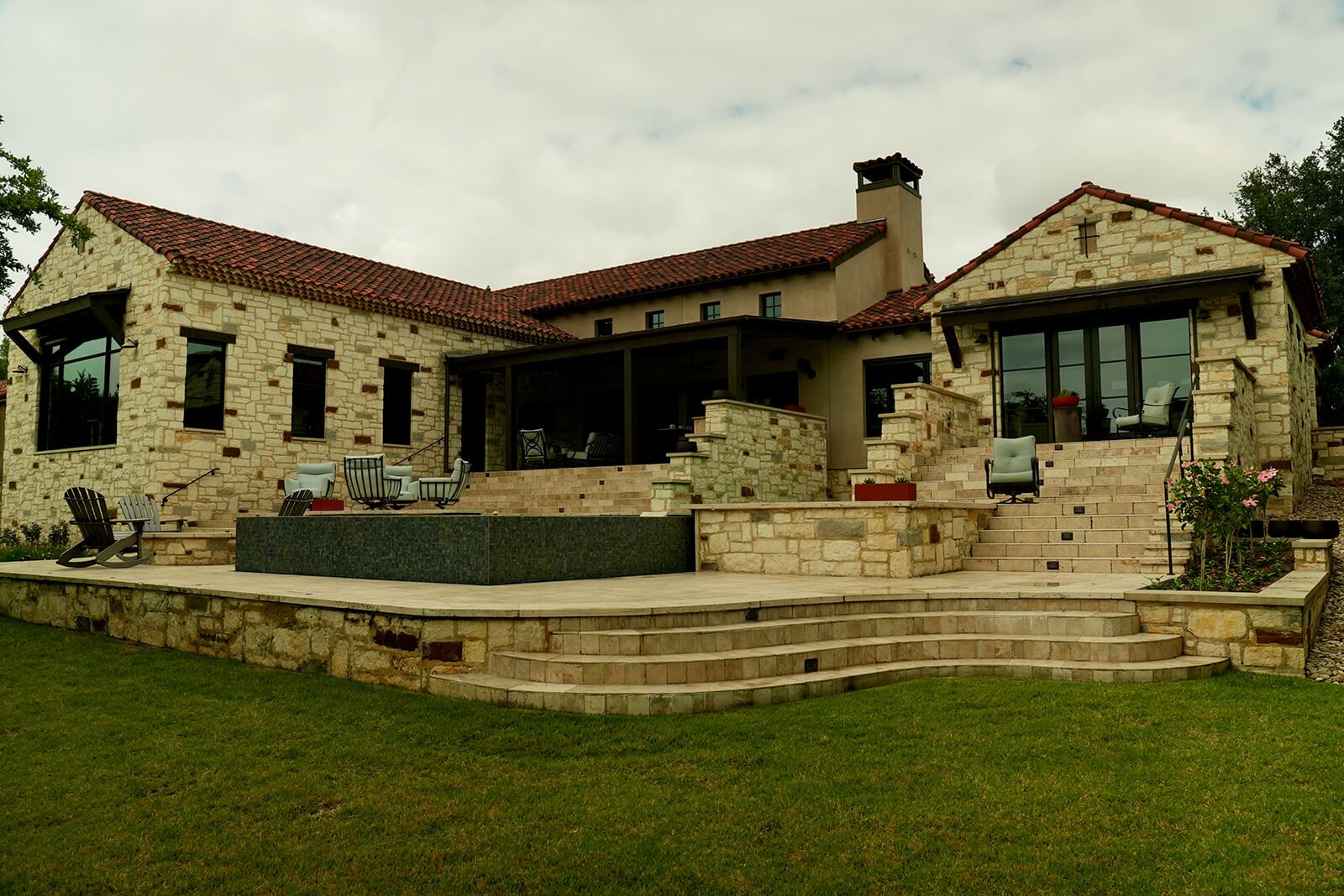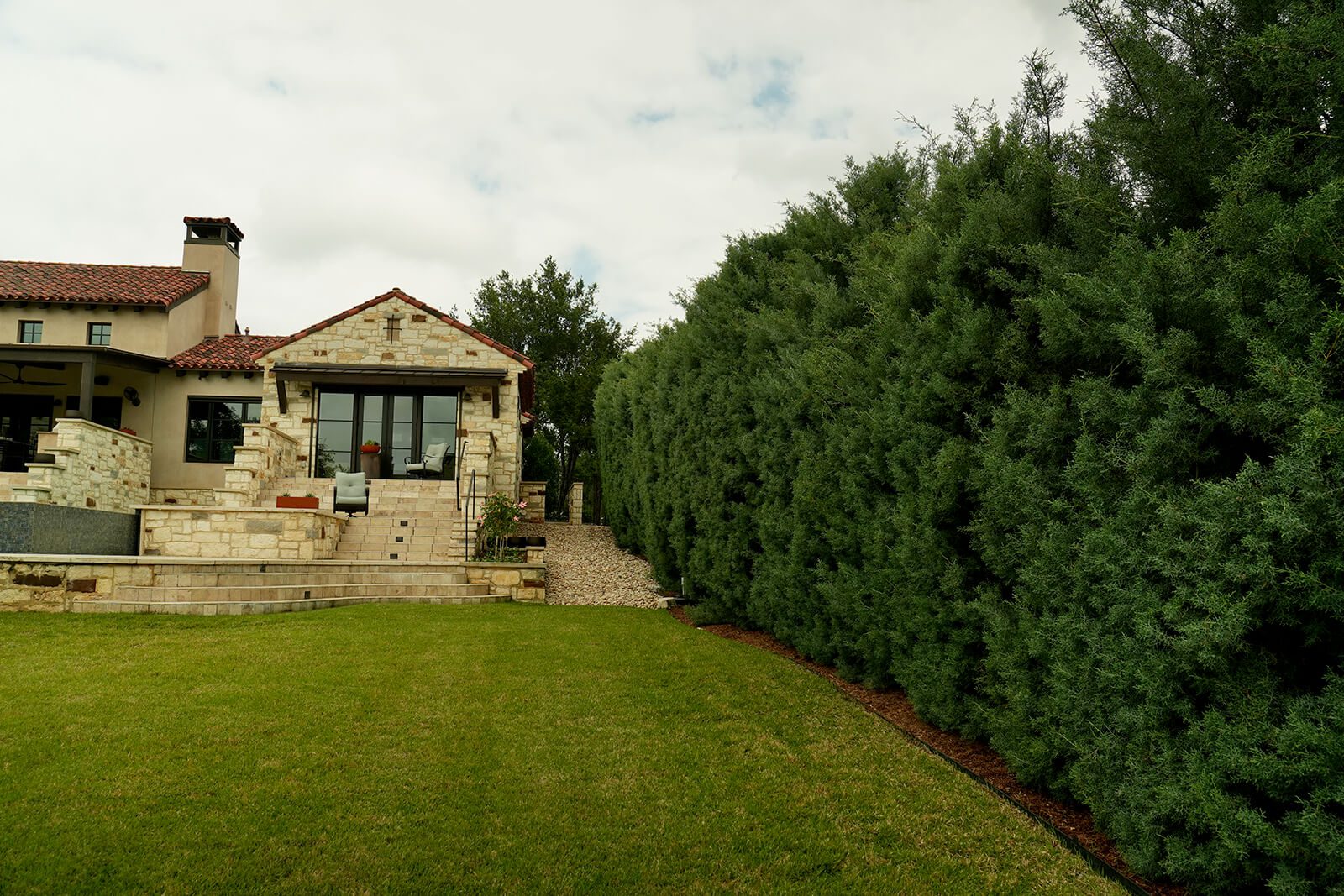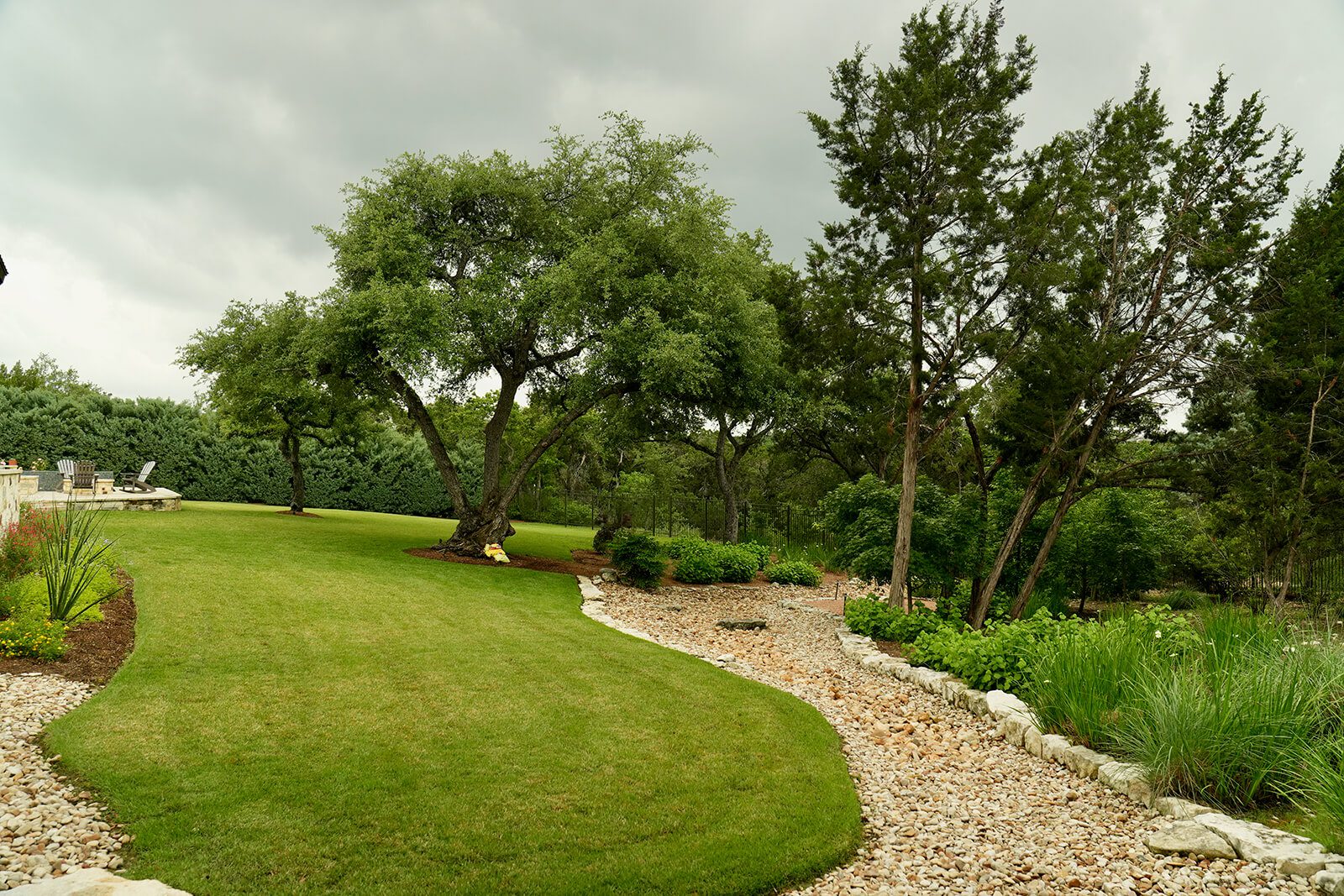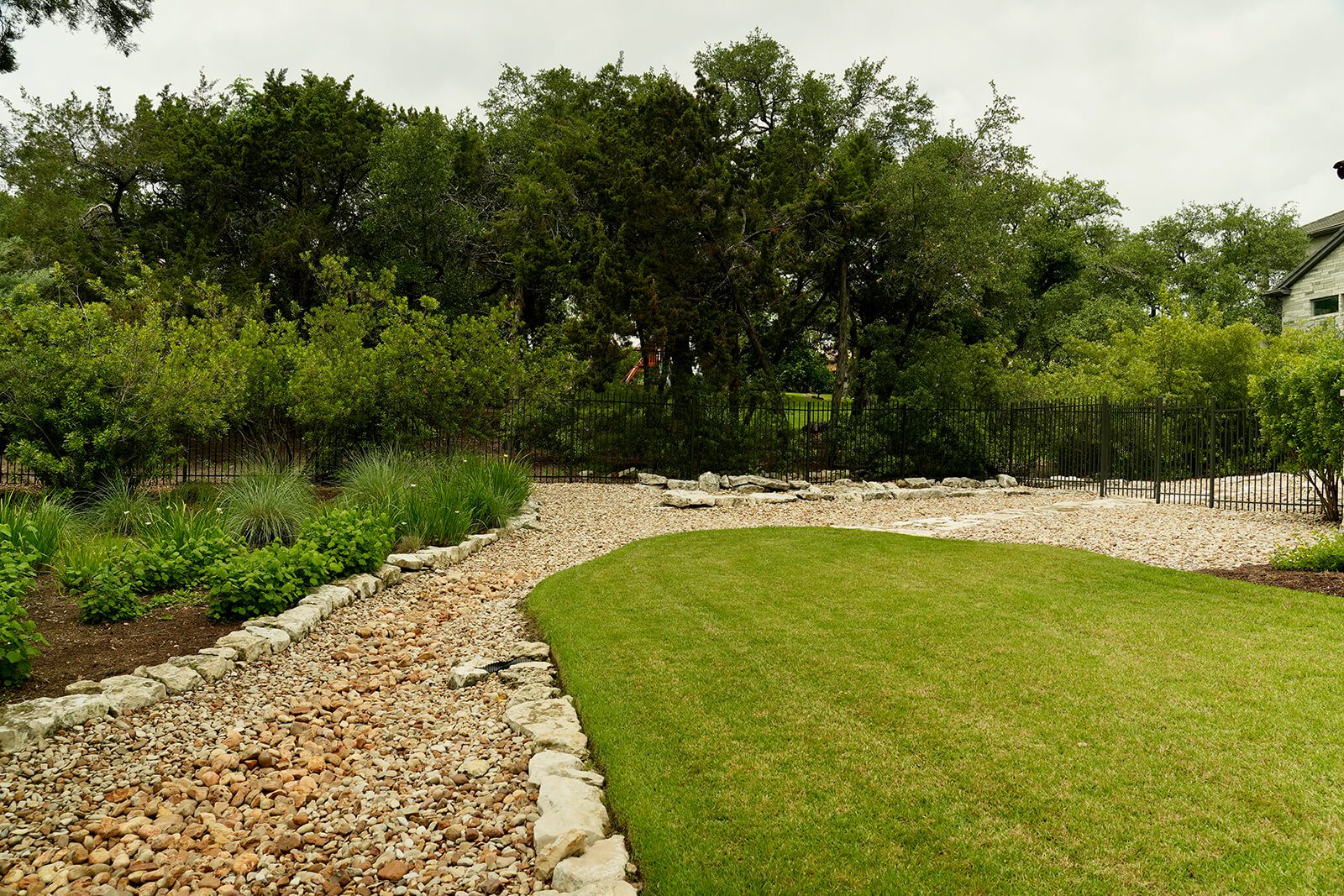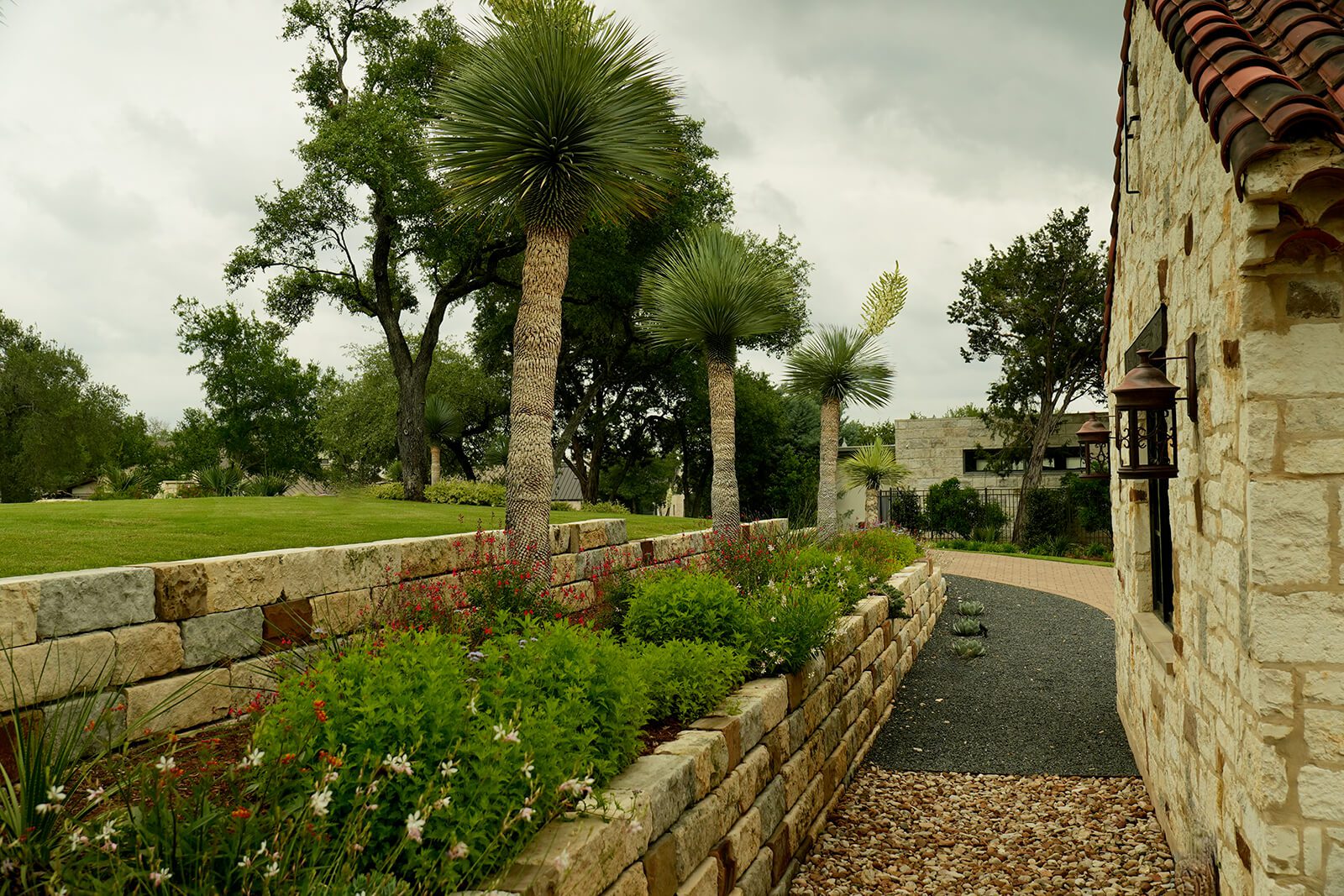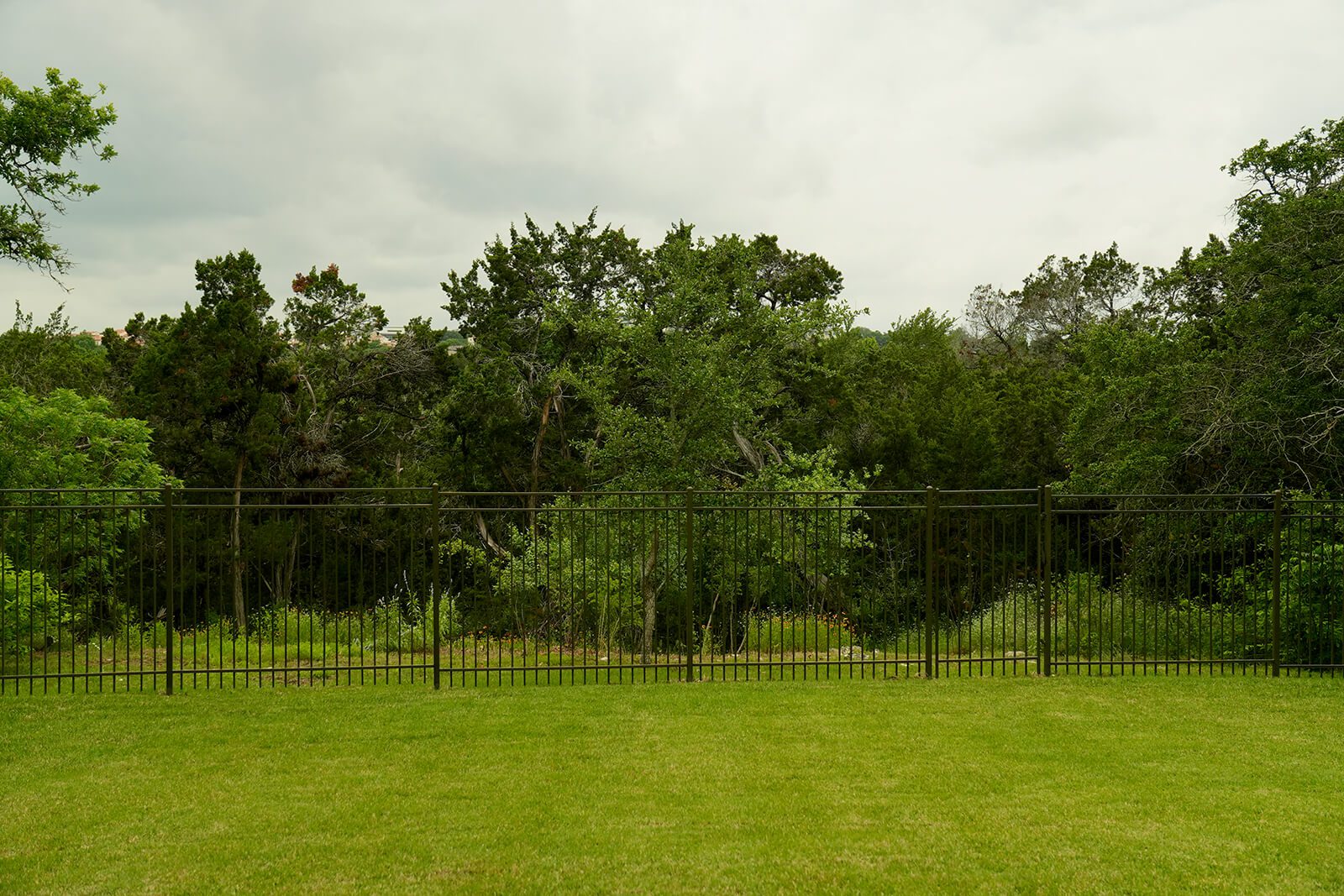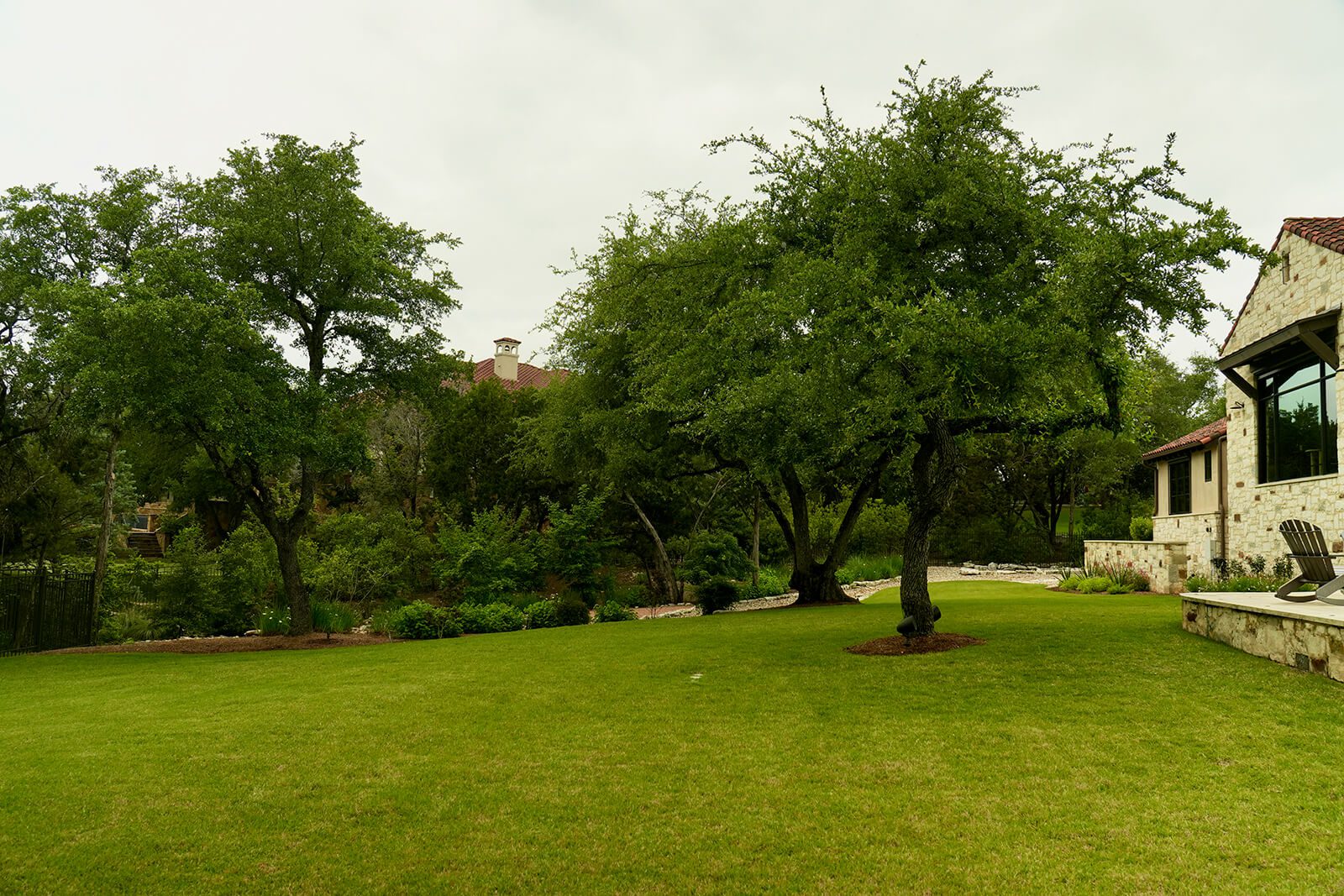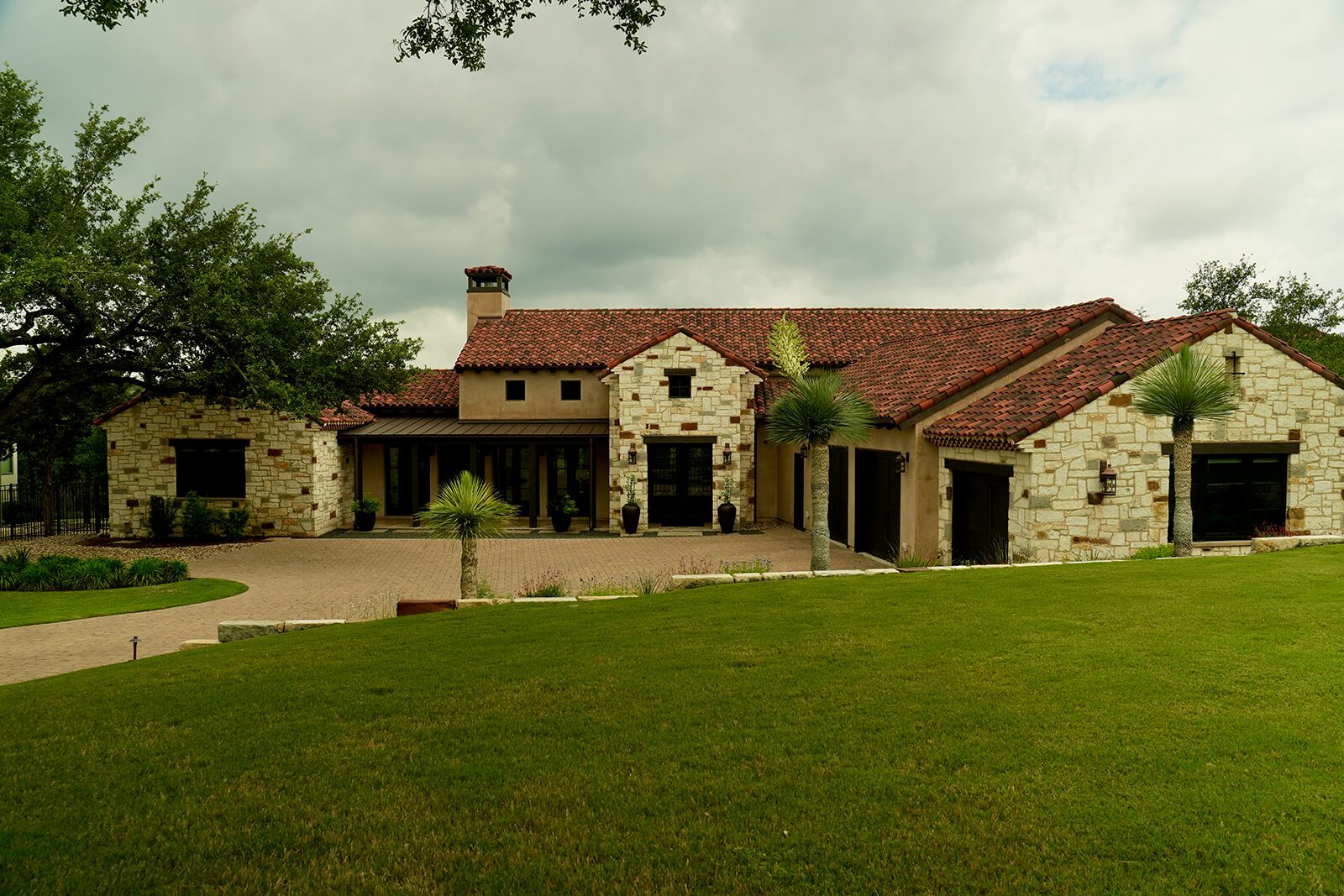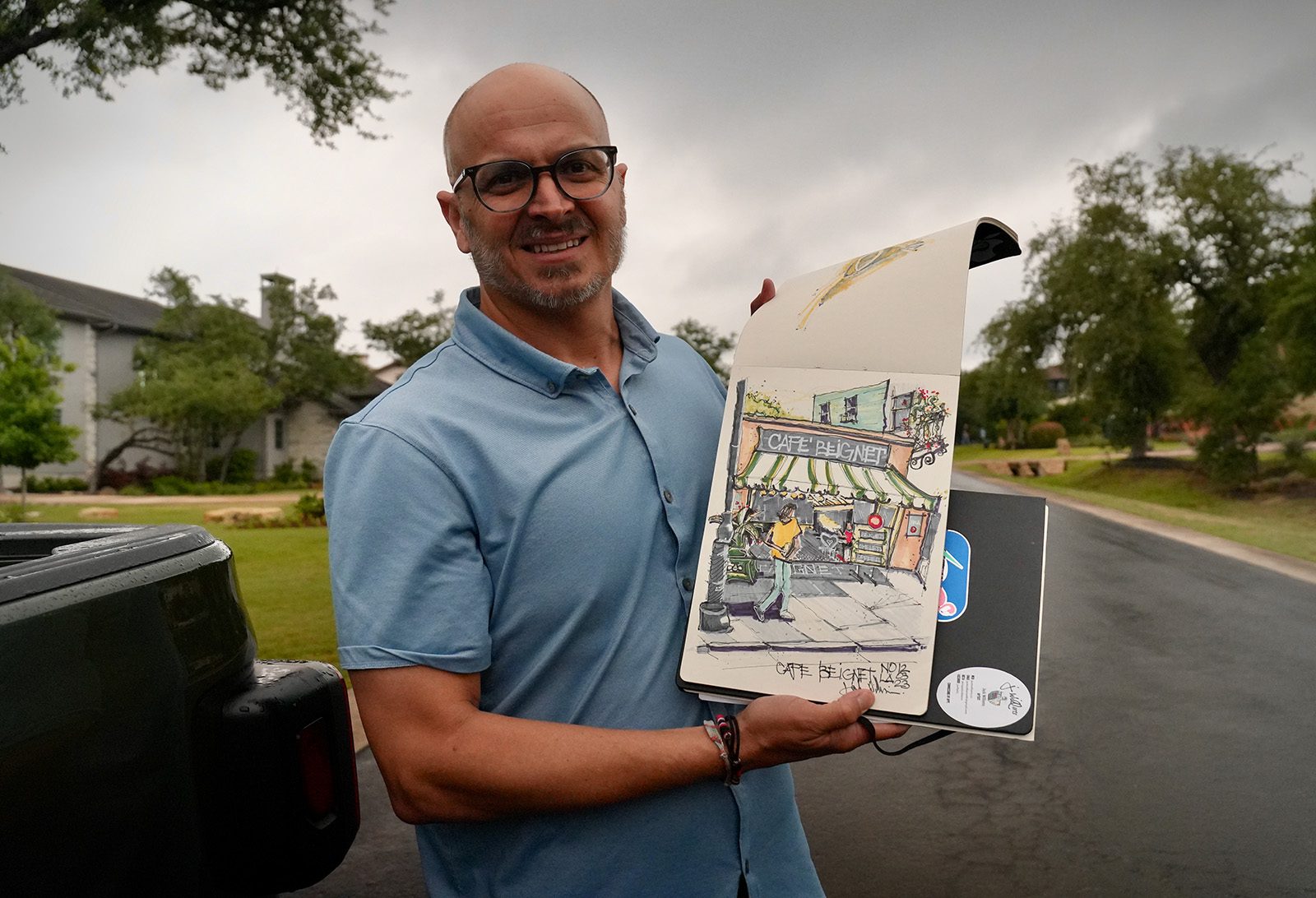Check Out Austin Living Landscapes' Barton Creek Installation Photos!
What goes wrong in landscaping is when it takes six weeks and the client doesn't know that. What I really think works. And in marketing, we need to show people what we can do for them and tell them how it works.
Jack Williams [00:00:11]:
Something's gonna give, you know, it's either I'm gonna keep working 80 hours a week, or, you know, the project's gonna go down or the designs are gonna go down or, like, you know, things are gonna miss.
Jack Jostes [00:00:23]:
The downside is that when your project manager is busy, and especially if they're incentivized to be selling, then they may focus more on the selling and less on the project managing.
Jack Williams [00:00:35]:
And maybe I need to look deeper, longer. Like, I've hired recruiters to try to get project managers. The people who show up at the interview and the people who are on the resume aren't the people that sometimes show up on the project. And so I'm at this point where it's like, well, do I really want to go through that again?
Jack Jostes [00:00:52]:
Hey, everyone. Jack Jostes here. Right now I'm in Barton Creek, which is just outside of Austin, Texas. And I'm with Jack Williams. He's the owner of Austin Living Landscapes. He's a client of mine at Ramblin Jackson. We've worked together on your website and your SEO, and I'm super thrilled to be here because we've managed your photos and your website, and we've looked at your designs, but now we're here in a property. So I'm excited to have you on the show, Jack.
01:19 - Meet Jack Williams of Austin Living Landscapes
Jack Williams [00:01:19]:
Yeah, same, same. I'm excited for you to finally see what you guys and your team have been helping with for these past couple of years.
Jack Jostes [00:01:26]:
Yeah.
Jack Jostes [00:01:26]:
And we're lucking out for now with the weather because it's, like, perfectly overcast, and it just stopped raining, so everything is, like, green. It's got some dew on it. So let's. We're gonna walk through today. So if you're listening to this episode, I definitely recommend watching this one on YouTube, because we're gonna show some photos and videos of this absolutely incredible project. And so before we walk on in, tell us kind of what. Who are you and what's your background?
Jack Williams [00:01:56]:
Yeah, so, my name is Jack Williams. I'm the owner of Austin Living Landscapes. My background, I have a degree in landscape architecture from LSU, and I moved to Austin in 2001 and started Austin Living Landscapes about eight years ago.
Jack Jostes [00:02:11]:
Cool. So what brought you to Austin from Louisiana?
Jack Williams [00:02:16]:
So I was looking for something a little different than Louisiana at the time. And there was a girl who's here. She happens to be my wife now 21 years later. So, yeah, those two factors brought me over to Austin. Austin seems like a really cool place. And it is.
Jack Jostes [00:02:34]:
And is your wife from here?
Jack Williams [00:02:36]:
No, she's not. We just met their mutual friends and just landed here in Austin.
Jack Jostes [00:02:40]:
Cool. What's your favorite thing about Austin, Texas?
Jack Williams [00:02:43]:
Oh, gosh. Probably the hill country. When I was growing up thinking of Texas, in my mind it was either cowboys in deserts or Houston, but then you come to Austin and it's like, oh, there's hills in Texas. There's, you know, mountainous green and.
Jack Jostes [00:03:00]:
Yeah.
Jack Jostes [00:03:00]:
So are we in hill country right now, would you say?
Jack Williams [00:03:04]:
I think it's probably like the gateway to the hill country.
Jack Jostes [00:03:06]:
Okay.
Jack Jostes [00:03:07]:
That's what I thought because it is pretty hilly here already. Even just driving in here is different. And I think I'm going to head even further into the hills after this. I'm out here speaking about recruiting at an agency mastermind. So would Lake Way be considered hill country? Am I going to go through the hills to get there? Yeah, because it's kind of west of Austin, right?
Jack Williams [00:03:27]:
Yeah, yeah, you definitely hit some hills. Keep going west, and then you're definitely going to be right in it.
3:38 - Landscaping Overview of Residential Home in Austin, Texas
Jack Jostes [00:03:38]:
So, Jack, we're standing in front of this retaining wall, and my understanding is that this was actually already here before you did your part. So kind of tell us a little bit about the background about this property.
Jack Williams [00:03:47]:
Yeah, so the. So the clients engaged with an architect and they had a custom builder build the house. They sighted the home and they had to set up these retaining walls to level out and create the foundation of it. Prior to that, this lot was just covered with cedars and old growth, so they had to pull all that out. We have these retaining walls in place and then they had a previous builder grade contractor that just, like, put up these evergreens and you couldn't see the house. Everything was blocked in.
Jack Jostes [00:04:21]:
So there were trees where. What are these?
Jack Williams [00:04:24]:
These are called yucca rostrata.
Jack Jostes [00:04:25]:
Yucca rostrata?
Jack Williams [00:04:26]:
Yes. Yep.
Jack Jostes [00:04:27]:
They're cool. How tall will those get? So when they're full grown?
Jack Williams [00:04:31]:
So those will. In this area, they'll probably get like 15, 20 ft tall, but they're very slow growing. So it's like each one of, you know.
Jack Jostes [00:04:39]:
So these were previously there were evergreens kind of blocking the whole house. Tell us, what are some of the plants that you have in here and why did you pick them?
Jack Williams [00:04:47]:
Yeah, so this is what we call the butterfly garden. And because of the massive droughts, and then extreme temperatures that we have, we wanted to go native, and the owners also wanted to be mindful of butterflies and butterfly garden. So we created this butterfly garden here. We use mist flower, different types of salvias. We've got the yuccas in for, like, some architectural interest. And, yeah, and what it does, it just creates this wonderful small, little habitat for hummingbirds, bees, the monarch butterflies that fly right through Austin every year. So it creates this wonderful habitat, and also it's just beautiful with really low maintenance, really low watering. So I think it's a wise planting decision for this part of the yard.
5:40 - Jack’s Innovative Principles of Landscape Design
Jack Williams [00:05:40]:
All right, so one of the things I like to implement in my designs is there's a few different principles of design. So there's line, color, form, and texture. And so, thinking of these things, I just wanted to kind of show what goes in the thought process of this. So we have these wonderful lines of this retaining wall that's sort of drawing all the way around the property. And then you've got these nice architectural features of these yucca stratas that just create some form and rhythm throughout the design. And then we have colors. So we have these chartreuse colored greens, and then the light blue of the mist flower that sort of accents against the red. So it really helps these two kind of pop and play together.
Jack Williams [00:06:27]:
And then we have some subtle whites of the white guara that work together as well. So with this entrance, you can kind of see the rhythm of, like, the reds every two or three different plants to where you end up, like, getting this color scheme going of the reds and then the light blues, and then even bookending down with the white guaras down at the end. So you end up kind of encompassing all the different things of, like, the line, color, form, and texture to where there really is some thought behind what we're doing, rather than just taking a dozen different plans and just throwing them in, seeing what works.
Jack Jostes [00:07:08]:
All right, so, Jack, now we're in the backyard. Tell me a little bit about how you created a sense of privacy back here.
Jack Williams [00:07:15]:
Yeah, so this is residential neighborhood, so they have neighbors on both sides of it. But one of the things that we wanted to do was to get full privacy from the ground all the way up. So we selected to use Arizona cypress, which is a very drought tolerant, fast growing evergreen. That would really kind of work. So we planted these all along the side there, created a hedgerow of these Arizona cypress, and they really took off. They're liking it. Creates the privacy that they need for swimming.
Jack Jostes [00:07:44]:
And they're I don't know, 20ft tall now.
Jack Williams [00:07:49]:
Yeah.
Jack Jostes [00:07:49]:
So how tall were they when you planted them, and how tall will they get?
Jack Williams [00:07:54]:
Yeah, so we planted them and they were probably eight foot. Eight footers. And that was maybe, like, four or five years ago.
Jack Jostes [00:08:04]:
Okay.
Jack Williams [00:08:04]:
And then they really just had.
Jack Jostes [00:08:06]:
And they survived the great Texas freeze of 2021. Did anything have to be replanted?
Jack Williams [00:08:14]:
We did have to do some replantings because it was such a crazy thing, but. And we also had to come in and do a lot of tree trimming. We brought an arborist in here and just really took care of these oaks.
Jack Jostes [00:08:25]:
Yeah, well, yeah, there's definitely a lot of mature trees here. And it looks like everything generally made it, which is incredible that plants can do that. So then we're looking this way, and a few hundred yards, you know, to the east of us is a golf course, and tell us a little bit what's going on there. So there's a fence, and then what's on the other side of the fence?
Jack Williams [00:08:50]:
Yeah, so there's a fence. But their property still continues to go about another 100ft or so. So in this back area, we created some compost piles, created some wildflower seeding, and really just started to try to bring back the native habitat from what it was trying to get rid of, noxious weeds and volunteer trees. And so we have Indian paintbrush and Salvia farinacea. We had some blue bonnets that everyone in Texas loves. And so it's really. It's been a really nice.
Jack Jostes [00:09:25]:
Is that a blue bonnet right there?
Jack Williams [00:09:27]:
That's actually a salvia.
Jack Jostes [00:09:29]:
Okay, so where is the blue? I don't think I've seen a blue bonnet. I've seen streets named Blue Bonnet. I've seen everyone mentioning it. I want to see one.
Jack Williams [00:09:37]:
You gotta go back in time two weeks.
Jack Jostes [00:09:39]:
Okay.
Jack Williams [00:09:39]:
You just missed.
Jack Jostes [00:09:40]:
Oh, I just missed?
Jack Williams [00:09:40]:
You just missed?
Jack Williams [00:09:42]:
Yes, yeah, you might see one on, like, the tail end of something, but, yeah, unfortunately, I can't help you.
Jack Jostes [00:09:46]:
Is that, like, a real popular plant in this area?
Jack Williams [00:09:51]:
Yes, yes. So blue bonnets in the Texas hill country are like. They're all along the roadside. I think that I read a stat that said the TXDOT, the Texas Department of Transportation, puts, like, 30,000 pounds of seed a year throughout central Texas. And, you know, all the way out to west Texas of the bluebonnet. It's the state flower. They love it as much as they love barbecue.
10:13 - Managing Water Drainage and Plant Survival
Jack Jostes [00:10:13]:
So, Jack, we are standing in, like, a creek that you built here. Tell me about the drainage needs for this property we're on. We're on a hill. We're definitely on the side of a hill. What happens when it rains? And how have you designed this backyard to manage that?
Jack Williams [00:10:29]:
This property slopes from top to bottom, and then it also has a cross slope coming down from the neighborhood, so they receive everyone's runoff, and then it all just flows down. So we had a few. A few huge rain events a couple years ago, and we really had to do something about it. So the client called us in, and then we created these dry creek beds that really just carried all the water, discharged everything from their house, discharged everything up the hill, and created these big, wide creek beds that get the water running into the actual Barton Creek.
Jack Jostes [00:11:05]:
Oh, so it literally ends in Barton Creek.
Jack Williams [00:11:08]:
Yes.
Jack Jostes [00:11:08]:
That's pretty cool. And you had to expand it at one point?
Jack Williams [00:11:14]:
Yes, yes, so we had this huge rain event. We thought that we were big enough on the volume that it could carry, and then we noticed that we had additional washout from the beds on either side. So we had to widen it even further and make it even deeper just so it could carry all that water through. We use locally sourced river rock from the Colorado River here, and then we use existing stones on the property to create the edges, put some boulders in there for interest, and then put some native plants on the side to help soften it up.
Jack Jostes [00:11:46]:
And how has it worked out?
Jack Williams [00:11:48]:
It's worked out great so far. Yeah, it's like three times a charm, right?
Jack Jostes [00:11:53]:
Yeah, it looks really cool. So there's. Yeah, there's rock. Is this. What is this river rock? Or what is this?
Jack Williams [00:12:01]:
Yes, so this is river rock. And then we use various sizes, because if you use too small of river rock, the water will just pick it up.
Jack Jostes [00:12:09]:
And is this imported from Colorado, or where does this rock actually come from?
Jack Williams [00:12:13]:
This comes from. So we have a Colorado River here in central Texas, and so it is sifted through at the bottom of the Colorado River and then cleaned up. And then that's what we use mostly for our mulches and ground covers.
Jack Jostes [00:12:35]:
All right, so finally, we're sitting next to this fire pit. There's this incredible pool there. Is there a hot tub there?
Jack Williams [00:12:45]:
I think so, yes.
Jack Jostes [00:12:46]:
Yeah.
Jack Jostes [00:12:47]:
So was this all, this was all built by the original builder, though?
Jack Williams [00:12:50]:
Yeah, the builder, yeah.
Jack Jostes [00:12:52]:
Yeah.
Jack Jostes [00:12:53]:
But I like it, you know, and it's cool to be here between the oak trees and the dry creek and the cypress over here. It really. You really do feel privacy here. You feel secluded. Even though the neighbors are relatively close. So I love it. So I think you've done an incredible job.
Jack Williams [00:13:13]:
Thank you.
Jack Jostes [00:13:14]:
And it's cool to just hang out and see one of your spaces.
Jack Jostes [00:13:16]:
Yeah, yeah.
Jack Williams [00:13:17]:
I mean, I really enjoy, we've worked with these clients over the years, and I really enjoy just coming and walking through with them and then seeing how everything has developed over the years and what else we can do to kind of just maximize the already beautiful area that it is.
Jack Jostes [00:13:36]:
Yeah.
Jack Jostes [00:13:37]:
So, Jack, you've been in business for eight years. When we started working together, I think you were around 1.2 million and then broke 1.5m, did 1.8m, and your ring the bell goal with Ramblin Jackson is to break $2 million.
Jack Williams [00:13:51]:
That's right.
13:52 - Balancing Sales, Design, and Project Management
Jack Jostes [00:13:52]:
And so what are you seeing that needs to change in the business? So you've started it. You've been kind of doing the sales, the project management, the designs, and that's a lot of revenue to be doing this. So tell us, the audience, what's going on, and how are you hoping to get to that next level?
Jack Williams [00:14:11]:
Yeah, we, yeah, it's been wearing a lot of hats with doing everything myself, and I have a couple of people that work part time for me, one person who's full time, but, you know, it's having to touch every different aspect of the project and of the and the life cycle of a project. And then in addition to, like, just the actual running a company, running a business, something's gonna give, you know, it's either. It's either I'm gonna keep working 80 hours a week or, you know, the project's gonna go down or the designs are gonna go down or, like, you know, things are gonna miss, you know, so it's. So I think at this point, I need to figure out whether I'm gonna hire a designer to come in and actually, you know, take the leads and do the designs from start to finish or hire a project manager to oversee the designs. And so sometimes I, you know, like, I'll think about, what do you do first? Like, where do you put the cart before the horse, you know?
Jack Jostes [00:15:23]:
Yeah, well, I'm pretty sure everyone listening, including me, has gone through this phase in business. And surprisingly, I mean, I have. You were just asking. I have over 100 clients all over the country, and surprisingly, none of them do it the same way. I actually, believe it or not, of all of my clients, none of them really do the exact same services. And the way that they do sales, design, and project management varies greatly. So I think there are a few different models that work. One is the salesperson, is the designer, is the project manager.
Jack Jostes [00:16:01]:
So I do have a number of clients who do that. And I think the benefit to the client is that they build this relationship with the designer. They have really good communication. There's less risk of miscommunication and like, a handoff from a sales and designer to somebody else. The downside is that when your project manager is busy, and especially if they're incentivized to be selling, then they may focus more on the selling and less on the project managing. And then that can create the problem of the client not getting the communication they need.
Jack Williams [00:16:40]:
It's a big balance in that. And I also, and this might just be in my head, but thinking that can someone who is design oriented, not saying can someone, because it's probably possible. Of course it is, because I do it. But, like, someone who's, like, design oriented may not be the best project management oriented to where it's like, there's.
Jack Jostes [00:17:08]:
I believe that's true. I think that's the nature of, I think the nature of a salesperson is different, and it's conflicting with the project manager. Cause the salesperson is wanting to sell things and open new things, and the project manager is like, wanting to complete things. And so does that ever, like, stress you out?
Jack Williams [00:17:26]:
Yeah, well, and I think I, I'm laughing because I think I do both.
Jack Jostes [00:17:30]:
Yeah.
Jack Williams [00:17:31]:
Like, I am that person to where.
Jack Jostes [00:17:33]:
So you're also the owner of the company?
Jack Williams [00:17:35]:
Yeah.
Jack Jostes [00:17:35]:
You know, so there is that. And it's not to say, I'm sure there are people listening who are like, no, dude, I do both. And you can do both. I just think that they require different skills.
Jack Williams [00:17:45]:
It is.
19:11 - Streamlining Client Engagement and Design Processes
Jack Jostes [00:17:46]:
And different focuses and different amount of energy and bandwidth, and that, that's just a risk of that model. But there are, I have a lot of clients who do it, and their clients love it, and they're thrilled with it. And then I know some people who shave off certain parts of it. And so that's what I'm wondering for you, is could, like you're doing, you're wearing many hats. Could someone else wear one of them? Maybe you don't need somebody who wears all of the hats all of a sudden, but could you bring somebody on who does? Is there like an administrative part of the sale that somebody else could do for you? Can we talk about the timeline for your sales right now? So from phone rings or you get a lead through your website, you have an initial conversation. What happens next and how long does it take?
Jack Williams [00:18:39]:
So the timeline we get a phone call, we follow up with email, send a questionnaire out, and then we schedule a time for an initial consult. Once we have a consult, then we can determine, you know, if it's going to be a design fee associated with it. So, like a full on design, and then from a design, then we have to go back out again to do inventory and analysis, check grades, shoot grades?
Jack Jostes [00:19:10]:
Yeah.
Jack Williams [00:19:11]:
Kind of develop more of the actual property itself.
Jack Jostes [00:19:13]:
After you've been paid?
Jack Williams [00:19:16]:
Yes.
Jack Jostes [00:19:17]:
Okay, so that's part of the design?
Jack Williams [00:19:19]:
Yeah, yeah, so there's a design agreement. So the way we tell people, it's. Yeah, it's two proposals. One, you're gonna get a proposal for design services, and then the other proposal for installation services. So it's designed and build, and then we go do the concept drawing, meet the clients, make sure that we're kind of run it up the flagpole, make sure that it's checking all of their boxes that we want, go over different materials and images. We go back, fine tune the design, refine it a little bit more, and then put together a proposal for install. But, like, the life cycle of that could be like six weeks, four to six weeks. And I think some of that is, you know, we just get too busy being in the field or actually putting together estimates.
Jack Williams [00:20:11]:
And you gotta, like, get a sub out to a property to take a look at it because they're not gonna bid off of drawings because, you know.
Jack Jostes [00:20:19]:
Well, so is this a problem? Or, like, who's is? Or do you just feel like it's slow? Or, like, is it, is this just how long it takes?
Jack Williams [00:20:26]:
I feel like it's slow, personally. It hasn't. I don't think it's cost us many jobs. Like, I don't study the metrics of that. So, like, I don't think it's cost us many, but also, at the same time, it's like, I want to get the client like it. You know, you meet with them the first time, they're super happy, super excited. Yeah, let's go. And then it's like, six weeks later, and it's like, okay, all right, now we're ready to build it. And then, you know.
Jack Jostes [00:20:57]:
I think there's a couple thoughts that I have is, one, I think you should count it, because if you started counting how long it takes and, like, sharing this with your team and counting, like you should, you can arrive at a standard and like, hey, we need to get this done in this amount of time. And then you can tell your client that. And I think what goes wrong in landscaping is when it takes six weeks, and the client doesn't know that.
Jack Jostes [00:21:24]:
Right.
Jack Jostes [00:21:25]:
So if they're expecting two and you're taking six, that creates a problem. But if you're telling them, hey, this typically takes four to eight weeks, right. And it's on your website, and it's on a video, and it's in the first conversation, and they're like, yeah, cool, thanks. And then you come in at six weeks, they're like, oh, it's two weeks shorter than eight. And they're stoked. So part of me is like, maybe that's just how long it takes. Part of me is also wondering, are you communicating with your clients that this is how long it takes?
Jack Williams [00:21:54]:
No.
Jack Jostes [00:21:55]:
No.
Jack Williams [00:21:56]:
I mean, I think we talked through it probably the same way I just stumbled it to you.
Jack Jostes [00:22:01]:
Right.
Jack Williams [00:22:02]:
So it's like, I'll explain these things, and in my mind, it's like, oh, inventory and analysis, concept design, revisions, and it's like they might. That might just be like a rock on a pond. It might just skip over, not even resonate.
Jack Jostes [00:22:18]:
What I really think works. And in marketing, we need to show people what we can do for them and tell them how it works. And then in selling, we show people what we can do for them and tell them how it works. And as long as that aligns with the operations of what we actually do, then people, if, as long as they are listening and we remind them of, like, this is how long it takes, they'll probably be pretty happy. Because, I mean, to do a project like this, I would be surprised that you could design something like this in less than six weeks for a property this size.
Jack Williams [00:22:49]:
For sure.
Jack Jostes [00:22:49]:
Now, I also know that this is one of the biggest and best out there. Right. And I want you to get more of them. But you also do smaller projects, and that's good. And those probably don't need to take six weeks.
Jack Williams [00:23:01]:
That's right.
Jack Williams [00:23:02]:
And you know, Jack, even like, the smaller projects, those, as I'm saying all this, like, I know I'm the bottleneck in most of this because it's like, either I'll go out and do a consultation or a site assessment, or someone else on my team will go and do a site assessment and a consultation, but then it has to be kicked back to me to, you know, design it, draw it out, give suggestions of man hours and building out the proposal and everything. So, like, if I had probably somebody else on my team who could do that.
Jack Jostes [00:23:43]:
Which part?
Jack Williams [00:23:44]:
The design and understanding how long it would take for something to be done bidding, you know, design and bidding.
Jack Jostes [00:23:54]:
Yeah, yeah, yeah.
23:43 - Hiring Challenges and Project Management Solutions for Landscape Design
Jack Jostes [00:23:56]:
I think that's so. That's one model. So I shared. There's the full from sales to design to project management model that some people have, I think then there's parsing out part of it and maybe there's an assistant. Is there stuff that someone else could be like, cool, Jack, I'm going to take away 12 hours a week of stuff that you're doing just so that way you're just. You're like, wow, maybe you don't even use the 12 hours. Maybe you're like, cool. I work 68 now, and I'm stoked.
Jack Jostes [00:24:31]:
Or maybe you're like, I'm going to fill that up with something more productive. I know somebody who has a principal in their company who is a design manager. And so they don't have any employees who do any of the landscaping, any of the construction. It's all subs, and he has a principal. But this person has sales skills and they can manage the client. But that's the difference is that's all they're doing. They're not actually designing it.
Jack Williams [00:24:58]:
So we've tried through, like, Fiverr and Upwork and a few different places to find people to do that, and it took us a while, but I think, fingers crossed, we landed on someone that we can kick over an old survey to, and then they could give us a base map, and then I draw on top of it, and then I kick it over to them and then they produce it back. I think that still me saying this is saying I'm still in the way. Whereas, like, if I could just give it to someone to help them manage, like, just to let them do it with just a little bit of guidance, as opposed to me just feeling like I've got to be in every single part of it.
Jack Jostes [00:25:39]:
This is the project management model. Could you sell the project and then introduce your project manager? And then they manage the client moving forward, and maybe you come do some site visits.
Jack Williams [00:25:51]:
So I've hired and fired project managers before. It's like, the people, you know, and maybe I need to look deeper, longer. Like, I've hired recruiters to try to get project managers. The people who show up at the interview and the people who are on the resume aren't the people that sometimes show up on the project.
Jack Jostes [00:26:12]:
Yeah.
Jack Williams [00:26:13]:
You know, and it's like, where'd that happen? So it ends up costing their salary plus wasted hours and time. And so I'm at this point where it's like, well, do I really want to go through that again?
Jack Jostes [00:26:27]:
Well, I have hired the wrong fit before, too, in the project manager role and other roles, and it happens, and it's very expensive and frustrating.
Jack Williams [00:26:43]:
Yeah, frustrating.
Jack Jostes [00:26:44]:
I actually hired someone for a position, and they were great at the client part. They could do sales. They understood marketing, but they couldn't type on a computer. They typed with two fingers. And so the nature of what we do is we write stuff for clients. We're, like, making pages for you, and there's a lot of typing that needs to happen to, like, meet with Jack Williams, type up my notes. Like, I read all.
Jack Williams [00:27:07]:
It's like, a journalist in the 50 you hired or something?
Jack Jostes [00:27:10]:
No, this person was, like, pretty close to my age, actually. And I didn't really think about that. I assumed that they had all these skills. And then when we were working, I'm like, look, I need these things, like, in this timeframe after a meeting with the client, so the rest of us can take what you met with Jack about Jack the client, and we're gonna go work on this. And so there's a lot of, like, typing.
Jack Williams [00:27:40]:
Yeah.
Jack Jostes [00:27:41]:
And so that was part of how I. You know, then we've. So basically what I'm getting at is we've added skills assessments as part of our process. So that way, when you apply there, and, like, if there's a, like, requirement, it is a, like, rate this, and it actually says, thank you, we're currently not accepting applicants who don't have a three or above Google Drive. And, Jack, this also saved me because a friend of mine applied and was like, hey, I don't have any Google Drive experience, but I'm really good. And I'm like, hey. And then I was able to just refer to that question and say, hey, thank you so much.
Jack Jostes [00:28:18]:
What we found is this is a requirement, and I don't know that this would be a good fit for either of us. So when you learn that skill, we'd love to have you interview later. So it didn't make it personal. It was just like, look, this is part of the job. On a scale of one to five, one being, like, I've heard that plants are green most of the time, and, like, five being, you know, I studied horticulture. What level of plant knowledge do you need that you couldn't teach? What do you need out of the gate for this person?
Jack Williams [00:28:48]:
At least three.
Jack Jostes [00:28:50]:
Okay.
Jack Williams [00:28:51]:
Yeah.
Jack Jostes [00:28:51]:
Okay, good. So you could say if they select two or one. Thank you so much. We're currently looking for somebody who. Whatever. I did this with a tree care company. And they need to know chainsaw skills. They need to know can you drive a trailer? And then they have a box for are you ISA certified? And that way when they get an applicant who has chainsaw skills, who knows how to back up a trailer that has a driver's license, that's ISA certified. Like, you better bet there.
Jack Jostes [00:29:20]:
I'm like, you need to call that person instantly. Cause that guy's gonna get a job somewhere fast. I believe this person's out there for you and that we need to think about what skills do they need to have? What could we teach them? But what do we need to have? And then how can we interview for them?
Jack Williams [00:29:37]:
I love that. I mean, because then one, it reduces the amount of, I guess, resume applicants you have to like filter through and then it gets you somebody a little more dialed into the need that we have for us to get to 2 million. Cause I feel like we're at 1.8. But that's a bumpy 1.8. It was bumpy to get there. It just drains. It's not fun.
Jack Williams [00:30:08]:
But if we could just smooth it out, implement some of these systems, get some right people in place, even if it stays at one eight or one five, if it's profitable, then a one five profitable is much better than a bumpy two, you know, I take the smooth one five any day, you know?
Jack Jostes [00:30:30]:
Definitely.
Jack Jostes [00:30:31]:
Cool.
Jack Williams [00:30:32]:
So, yeah, getting, I think getting clear on some of these things and having somebody help me put these systems into place, it's huge. That's, that's what we need.
Jack Jostes [00:30:46]:
Cool, Jack. Well, thanks for coming on The Landscaper's Guide. It's been fun looking at this property with you, seeing what you do and talking through some of this.
Jack Williams [00:30:54]:
Yeah, that's been great. I can't wait to hear it. Hear how much I sound not like myself.
Jack Jostes [00:31:02]:
Yeah, well, when you watch yourself on video or hear yourself, it. It does feel weird.
Jack Williams [00:31:07]:
Yeah, no, I look forward to it.
Jack Jostes [00:31:10]:
Thanks so much for checking out The Landscaper's Guide. I hope you enjoyed seeing this epic landscape in Austin, TX and hearing a bit about some of the challenges that landscape companies face while growing. So make sure you like this video and subscribe to our YouTube channel for more sales, marketing, and leadership content to help you grow your snow and landscape company. My name's Jack Jostes and I look forward to seeing you on the next episode of The Landscaper's Guide. Go ahead and click the link for this next episode.
Show Notes:
Watch the full episode + see the transcript at: https://landscapersguide.com/podcast/
Tell us where to send your beef jerky: https://landscapersguide.com/toolbox
Check out Austin Living Landscapes: https://austinlivinglandscapes.com/

